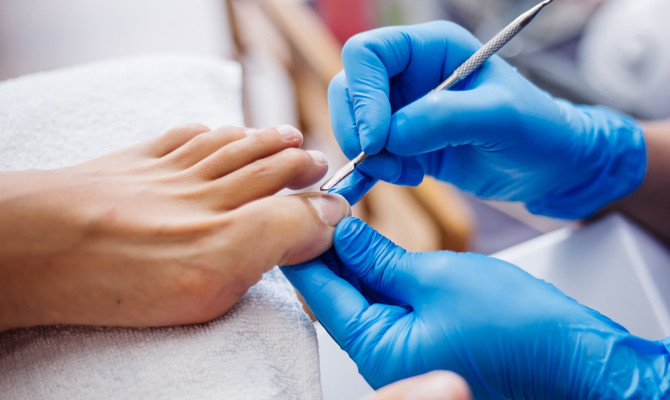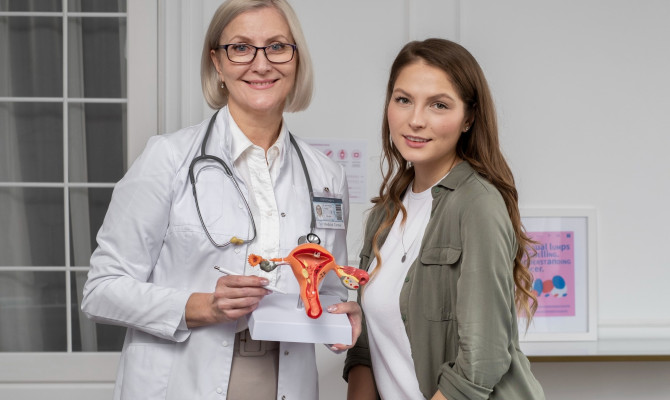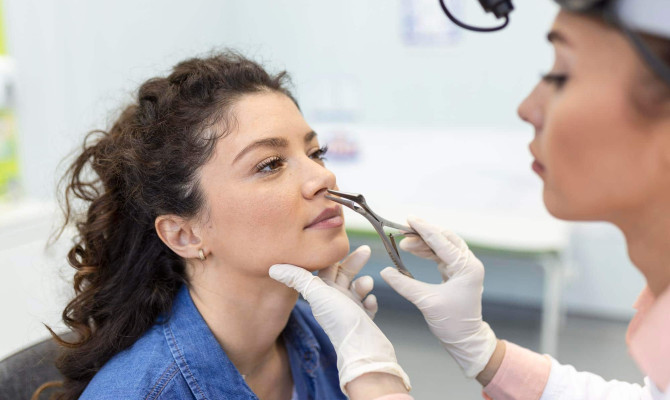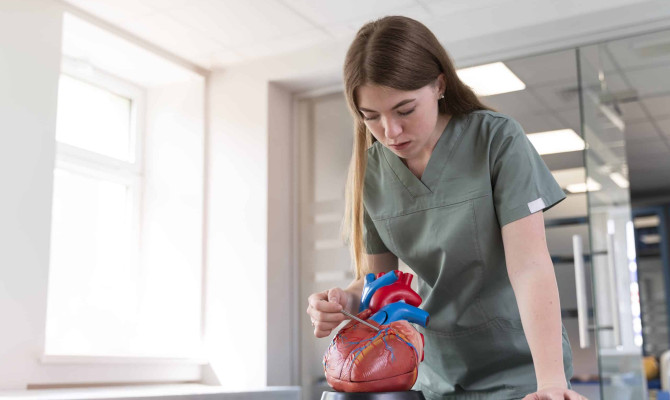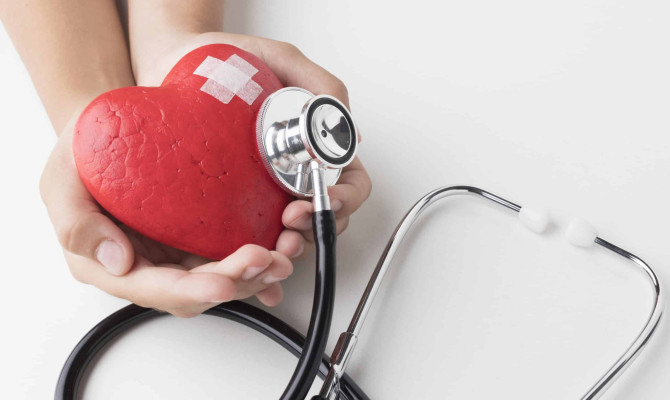Blood clots : Causes, Symptoms, and Treatment

- Blood clots
- 27 Sep 2023
Overview
What are Blood clots?
Blood clots also referred to as thrombosis, are collections of blood that resemble gel. They are the body’s normal response to limit excessive bleeding when a blood vessel is injured. A clot is created when platelets in the blood adhere to one another and are strengthened by fibrin. Blood clots are necessary for the healing of wounds, and protect the person from bleeding. But if they form inside blood vessels, they can cause problems. Deep vein thrombosis, pulmonary embolism, heart attacks, and strokes can all result from these blood clots, which can also block blood flow. For blood clots to be managed and complications from developing, prompt medical care is essential.1Overview| Researched based study from Clevelandclinic.org

Causes
What are the major causes of Blood clots?
Blood clots can have a variety of causes, and many different things can contribute to their development. Here are a few typical reasons:
- Trauma
- Immobility
- Surgery
- Pregnancy
- Smoking
- Obesity
- Health issues
- Hormone therapy
Trauma or injury
- The body starts clotting when blood vessels are injured or damaged as a result of an operation or an injury, preventing excessive bleeding2Causes| Researched based study from Heamatology.org
Immobility
- If a person doesn’t involve any physical activity in day-to-day life and that too for extended periods, which can be due to medical reasons like being confined to a wheelchair, or being bedridden, causes the risk of blood clots.
Surgery
- If the patient is going through surgery, to be very particular for a leg surgery the legs or lungs, he or she is more likely to develop the risk of blood clots.
Smoking
- People who smoke quite often, are more prone to the development of blood clots, it is so because, smoking damages the lining of the blood vessels walls in the body, and causes the formation of clots.3Causes| Researched based study from Bloodclot.org
Pregnancy and childbirth
- During pregnancy, a lot of hormonal changes occur in the body itself which can result in blood clotting. Also, at the time of childbirth, the pressure that the expanding uterus places on blood vessels can too increase the chance of the development of blood clots.
Obesity
- Obesity is often related to Insulin resistance and metabolic syndrome, which enormously affects the balance in the clotting factor. Also, obesity is related to low-grade inflammation, and this activates the formation of clotting.
A few health issues
- Several health issues, such as cancer (patients who receive chemotherapy, have a higher chance of developing DVT)8Causes| Researched based study from Cdc.gov , heart disease (imbalance of normal blood flow causes blood to clot), diabetes (inflammation increases the risk of clotting), autoimmune and clotting disorders to raise the risk of blood clots.
Drugs and hormone therapy
- Women who take oral contraceptive pills or hormone therapy are likely to develop blood clots since consuming such medications increases the levels of clotting factors4Causes| Researched based study from Clevelandclinic.org, and reduces the natural anticoagulants.
Symptoms
What are the primary signs and symptoms of Blood clots?
The symptoms of blood clots can vary depending on their location and severity. Here are some common symptoms associated with blood clots which are explained based on their cause of it:
Leg Swelling
- Swelling in the leg is the commonly occurring symptom that can occur in the calf, ankle, or foot, which may appear larger or feels heavy compared to the other leg, accompanied by cramps in the calf.5Symptoms| Researched based study from Mayoclinic.org
Pain and Tenderness
- One may feel pain, more like cramping, which later starts to worsen when walking or standing, and the area around it, which is a blood clot, becomes tender to touch.
Warmth and Redness
- The skin over the affected vein may feel warm to the touch and appears red because of the inflammation caused by the blood clot.
Visible Veins
- The veins in the affected leg start to appear more prominently due to increased blood flow and congestion caused by the clot.
Skin Discoloration
- DVT can lead to skin discoloration which appears pale or have a bluish tinge on the affected leg.
Respiratory breathing problems
- One may experience a sudden onset of shortness of breath which is the most common symptom of Pulmonary Embolism(PE)blood clot and it Its severity ranges from mild to extreme respiratory distress.6Symptoms| Researched based study from Uchicagomedicine.org
Rapid Heartbeat
- In PE, when the blood clot in the legs travels to the lungs it blocks the regular blood flow, and one may experience palpitations, which occur due to the increased workload on the heart for pumping blood.6Symptoms| Researched based study from Uchicagomedicine.org
Cough and Bloody Sputum
- A persistent cough may develop, which can sometimes be accompanied by blood-streaked sputum. The coughing may worsen with physical exertion or deep breathing.
Lightheadedness
- As soon as there is a reduction in the blood flow to the brain, due to Pulmonary embolism, suddenly one may experience lightheaded or dizziness, or may even faint. 7Symptoms| Researched based study from Hopkinsmedicine.org
Sudden Weakness
- This symptom can happen on either side of the body and is frequently one-sided. Facial dropping also occurs along with it, making it challenging for the person to smile evenly or when changing facial expressions.
Chest Pain or Discomfort
- When a blood clot forms in one of the arteries that supply blood to the heart muscle, it blocks the blood supply & causes the person to feel pain in the chest, and it is a major symptom of a heart attack. This pain may transfer to the other organs and upper parts of the body such as the stomach, backbone, jaw, arms (in most cases left arm), neck, and shoulders. It can last for minutes to hours with a severity of mild discomfort to intense pressure.
Nausea and Vomiting
- An imbalance of blood supply due to the clotting in the body, especially at the heart, affects the normal functioning of the digestive system which causes a person to have feelings of nausea, indigestion, upset stomach, or vomiting.
Risk
Who are at risk?
Several risk factors can make blood clots more likely to form. The following are some typical risk factors:
Old age
- People reaching the age of 60 or above are more prone to the development of blood clots.9Risk| Researched based study from Nlm.nih.gov It can be because of prolonged immobility since older people are less likely to travel or be mobile, which results in slow blood circulation and causes clots.
Surgery
- During the surgical procedure, there can be injuries that can damage blood vessels and inflammation can disrupt the blood, also, after the surgery, the patient has to be completely bedridden with limited mobility, which makes it another risk factor.
Obesity
- Obesity is related to having excess weight, and increased blood thickness which is viscous in nature, and when this thick blood flows through blood vessels it causes the risk of formation of clotting.
Family History
- Inherited conditions or deficiency in proteins involved in blood clotting can be passed down through families and can increase the risk of clot formation, and in some cases inherited conditions like Factor V Leiden mutation can increase the risk of DVT or PE.1Risk| Researched based study from Clevelandclinic.org
Medical Conditions
Health conditions can promote the risk of clotting, these include:
- Cancer (cancer cells release substances that promote clotting)
- Heart disease (coronary artery disease disrupts blood flow, increasing clot formation)
- High blood pressure (high BP damage the blood vessel tissue, causing inflammation leading to clotting)
- Kidney disease (dysfunction in the kidney disbalances the chemicals and hormones, leading to clotting).
Hormonal Factors
- In women, if there is an increase in the percentage of estrogen hormone either through the natural way of the menstrual cycle or through a contraceptive hormonal pill or therapy, it affects the clotting factors and results in blood clotting. It can also occur during pregnancy as well.
Smoke
- Smoking affects the clotting factors and hence harms the blood vessels, encourages inflammation, and raises the possibility of clot formation.
Specific Drugs
- Certain antipsychotic drugs, hormonal therapies, and chemotherapies promote clotting factors and raise the risk of blood clots.
Prevalence
What is the prevalence of Blood clots?
Some projections for the frequency of various conditions linked to blood clots are as follows:
- Deep Vein Thrombosis (DVT): DVT is estimated to affect 1-2 cases out of every 1,000 people annually in the general population. As people get older, DVT becomes more prevalent, with older adults experiencing higher rates.
- Pulmonary Embolism (PE): PE is estimated to occur in the general population on an annual basis at a rate of 0.5 to 1 per 1,000 people. According to the population and risk factors, PE prevalence varies and is thought to be a major global killer.
- Venous thromboembolism (VTE): This condition encompasses both PE and DVT. VTE affects 1-2 cases per 1,000 people in the general population each year. VTE is more prevalent in high-risk populations, such as patients with underlying medical conditions.
- Stroke: Ischemic stroke is the world’s leading cause of disability and in severe cases death. The cause behind this is the blood clots that block brain blood vessels.10Prevalence| Researched based study from Nlm.nih.gov The prevalence of stroke varies by population and is influenced by factors like age, gender, and health-related conditions.
Prevention

What are the preventive measures for Blood clots?
Adopting different strategies to lower the risk of clot formation is part of the process of preventing blood clots. Here are some precautions to take:
- Keep moving and work out frequently: Regular exercise will enhance blood circulation and ward off extended periods of inactivity. If one is leading a sedentary lifestyle or spends a lot of time sitting still, take breaks and get some exercise.
- Maintain a Healthy Weight: As obesity is a risk factor for blood clots, strive to maintain a healthy weight range through a balanced diet and regular exercise.1Prevention| Researched based study from Clevelandclinic.org
- Quit Smoking: Smoking harms blood vessels and raises the chance of blood clots. For the sake of one’s overall cardiovascular health, one should stop smoking.
- Medication and medical interventions: To stop blood clots from forming in people who are at high risk for them, medical professionals may prescribe anticoagulant drugs. Depending on personal risk factors, aspirin or other antiplatelet drugs may occasionally be suggested.
- Stay Hydrated: Consume enough water to avoid dehydration, which can cause blood to thicken and clots to form.1Prevention| Researched based study from Clevelandclinic.org
- Considerations regarding hormones: If a person uses hormonal contraceptives or hormone replacement therapy, talk to the doctor about the advantages and disadvantages. For a particular circumstance, they can assist in determining the safest options.
- Compression stockings: The doctor may advise wearing compression stockings to improve blood flow and lower the risk of DVT if the patient has undergone surgery or are at high risk for blood clots.11Prevention| Researched based study from Medlineplus.gov
- Understand and Manage Medical Conditions: As these conditions may increase the risk of clotting, follow the advice of healthcare providers when managing medical conditions like diabetes, cancer, heart disease, and autoimmune disorders.
- Follow Post-Surgical Recommendations: If one has had surgery, carefully follow the healthcare provider’s post-operative instructions, which may include mobility exercises and medications.
Treatment
What are the effective management and treatment options available for Blood clots?
The best course of action for treating blood clots, including those in the brain, depends on the particular condition and the severity of the clot.
Here are a few common approaches to treating blood clots in the brain:
Medical approaches that prevent coagulation:
- Anticoagulants, also known as blood thinners, are frequently prescribed to stop the development of blood clots and the formation of new clots, further lowering the risk of complications. Heparin, warfarin, direct oral anticoagulants (DOACs) like apixaban or rivaroxaban, and low molecular weight heparin (LMWH) are one such example of anticoagulant medications.2Treatment| Researched based study from Heamatology.org
- Thrombolytic Therapy: To quickly dissolve blood clots, thrombolytic therapy uses drugs (such as tissue plasminogen activator, or tPA). When there is an emergency, such as a severe pulmonary embolism or an acute ischemic stroke, it is frequently used. The use of thrombolytic therapy carries some risk and is typically saved for serious or life-threatening conditions.
- Inferior Vena Cava (IVC) Filters: An IVC filter may be inserted in some circumstances when anticoagulant therapy is contraindicated or ineffective. In the event of deep vein thrombosis, this device is inserted into the inferior vena cava, a large vein, to catch and stop clots from traveling to the lungs.5Treatment| Researched based study from Mayoclinic.org
- Catheter-Directed Thrombolysis or Thrombectomy: During these procedures, blood clots in particular blood vessels are directly removed or broken up using specialized tools and methods. They are frequently employed in specific instances of pulmonary embolism or deep vein thrombosis.
- Compression Therapy: To improve blood flow and lessen swelling in the legs, particularly in cases of deep vein thrombosis, compression stockings or pneumatic compression devices may be advised11Treatment| Researched based study from Medlineplus.gov
- Surgical Intervention: In extreme circumstances or rare cases, a blood clot may need to be removed or bypassed via surgery, especially if it poses a serious risk to limbs or vital organs.
Care at home
- In general, home treatment for blood clots is not advised and it need to be properly diagnosed and treated if complications are to be avoided. Blood thinners and other anticoagulant medications are frequently prescribed by doctors to stop the further development of clotting and promote the dissolution of existing clots.
- It is essential to speak with a medical expert who can evaluate the clot’s severity and choose the best course of action. Self-care at home increases the risk of serious complications and can result in inadequate management of the clot.
Prognosis
Prognosis of Blood clots
The outlook for people with blood clots, like deep vein thrombosis (DVT) or pulmonary embolism (PE), can differ depending on considerable factors like the size and location of the clot, how quickly it is treated, and the patient’s general health. The prognosis is significantly improved by early identification and appropriate management by following certain treatment procedures or preventing it before it worsens and affects the health. The majority of people can successfully resolve clots and avoid complications with appropriate medical intervention, including anticoagulant medications. The prognosis could be worse if the condition is untreated or if complications like organ damage or recurrent clotting develop. To reduce the risk of clot recurrence and guarantee the best long-term results, patients must adhere to their healthcare provider’s recommendations for medication use, lifestyle changes, and routine checkups. Prompt medical attention, adherence to treatment plans, and ongoing monitoring can contribute to a positive outlook for individuals with blood clots.
Any feedback on this article?
 This Articles content was accurate
This Articles content was accurate Very Informative Article
Very Informative Article I have a question or a comment
I have a question or a comment
 This article contains inaccurate content
This article contains inaccurate content This article was not helpful
This article was not helpful I have a question or a comment
I have a question or a comment
We appreciate your helpful feedback!
Checkout our social pages
References
-
Cleveland Clinic
Blood Clots | Overview
-
AMERICAN SOCIETY OF HEMATOLOGY
Blood Clots | Causes | Treatment
-
The American Blood Clot Association
What Does Smoking Have to do with Blood Clots? | Causes
-
Cleveland Clinic
What To Know About Birth Control and Blood Clots | Causes
-
Mayo Clinic
Deep vein thrombosis (DVT) | Treatment | Symptoms
-
The University of Chicago Medical Center
Difficulty breathing? It may be due to a blood clot, or pulmonary embolism | Symptoms
-
Johns Hopkins Medicine
Pulmonary Embolism | Symptoms
-
Centers for Disease Control and Prevention
Blood clots (deep vein thrombosis) | Causes
-
National Library of Medicine
Frequency and risk factor of lower-limb deep vein thrombosis after major orthopedic surgery in Vietnamese patients | Risk
-
National Library of Medicine
Pathophysiology and Treatment of Stroke: Present Status and Future Perspectives | Prevalence
-
Medline Plus
Compression stockings | Treatment | Prevention












